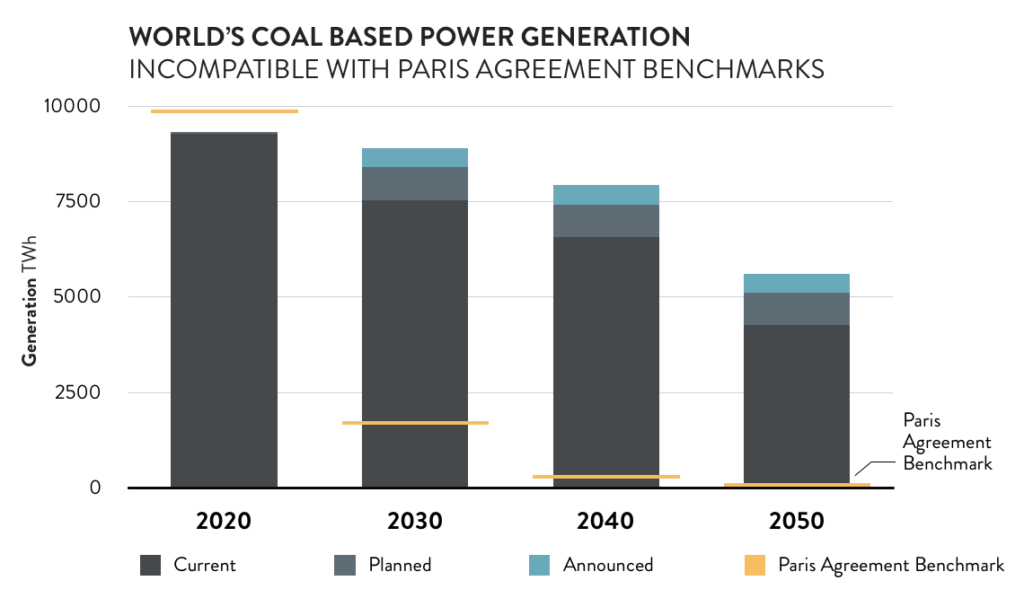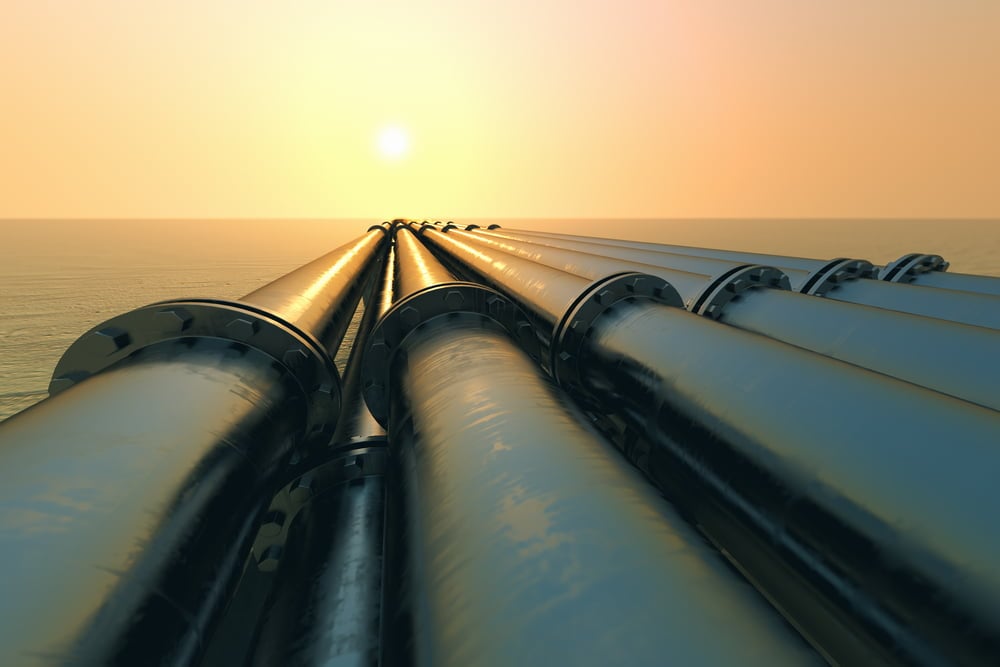The Prime Minister said last week “If you’re not for gas, you’re not for jobs in our manufacturing and heavy industries.”
We say if you are not for doing everything possible to reduce emissions, you’re endangering the planet and jobs in manufacturing.
The PM was referring to the $3.6 billion Santos Narrabri Gas Project which was given approval last week by the NSW Independent Planning Commission and many say the Commission was under great pressure from government and Santos to do so.
The Country Womens Association came out publicly against it. Doctors for the Environment SA whose members include Professors Peter Doherty, Stephen Leeder, Hugh Possingham, Michael Kidd, Fiona Stanley, Sir Gus Nossal, other medical luminaries were also opposed, as were 6,000 submissions to the inquiry.
They say without baseline studies of methane emissions it is impossible to verify the claims by the oil and gas industry that fugitive emissions will be minimal.
If natural gas is to provide maximum net climate benefit versus coal, the release of methane must be held to less than about one per cent of total gas production. In unconventional gas developments in the United States emissions ranging from 2 to 17% of production have been reported. Given the lack of direct measurement of fugitive emissions for the project, there can be no assurance that there is a net benefit to the climate from this development.
Former prime minister Malcolm Turnbull says the Government’s focus on a gas-led economic recovery is “a fantasy” and “crazy stuff” that should not be part of the Coalition’s energy policy.
Methane (natural gas) is a powerful greenhouse gas, 86 times more so than carbon dioxide when its atmospheric warming impacts are considered over a 20-year time period.
The PM’s call to cheer on gas for jobs is as inane as it is deceptive. The real reason heavy industry is unhappy is that their electricity prices more than doubled and gas went up x6 thanks to the rapid expansion of LNG exports which drove up production costs, linked local prices to international markets, and drove supply shortages.
ABC business editor, Ian Verrender told us last week what was driving the chaos:
Back in the mid-noughties, when global demand for gas was accelerating and Australia had an abundance of cheap supply, three big consortia raced to gain control of Queensland’s coal seam gas deposits, paying over the top for reserves.
Rather than build one massive export terminal, the three built separate facilities right next door to each other on Curtis Island. The total cost of this came in well north of $80 billion. And ever since, they’ve been writing down the value of them.
A few months ago, Santos lopped another $1.3 billion from its stake in its plant — the fourth writedown — while Origin sliced $1.2 billion from its Curtis Island interests. Shell, which controls the third plant, took a $9 billion hit to its Australian gas interests, accounting for about 40 per cent of its $22 billion global gas devaluation.
Woodside joined the party with a $4 billion writedown, part of a global rush to devalue assets as energy prices collapsed in the wake of the pandemic-inspired recession.
Investors routinely take a hit when companies make poor investment decisions. It’s taxpayers who foot the bill on government projects when they turn sour.ABC News
The PM’s answer is a gas reservation scheme to force companies to sell a percentage of production locally but the real agenda is a massive expansion of this fossil fuel.
If we think gas is transitioning anywhere, the sector has other ideas.
According to the Australian Pipelines and Gas Association:
Australia has abundant supplies of natural gas, both offshore and onshore, enough for more than 50 years, based on current production. It is Australia’s third largest energy resource, after coal and uranium, and it is a crucial part of Australia’s energy mix, providing a quarter of the nation’s needs. It is also an essential feedstock for a wide range of industries and is the key to attaining the consistent high temperatures required in many sectors of the manufacturing and waste disposal industries.
Outside the transport sector, natural gas is the largest provider of energy (total final consumption) in Australia, providing 911 petajoules in 2016-17, which was more than the 820 petajoules provided by electricity. Natural gas’s share of the Australian energy mix is continuing to rise.
https://www.apga.org.au/gas-facts-and-figures
Gas is currently 26% of Australia’s energy mix.
Narrabri will lock in production of 200 terajoules of gas a day for at least 20 years.
There’s a proposal to extend the Eastern Gas Pipeline from Horsley Park in Sydney to the Hunter Valley – 797 km – so Jemena can transport more gas to NSW and Victoria to service new gas power generation.
Four companies were given the go-ahead to explore for gas in Central and South West Queensland. Since 2015 the Queensland Government has released 80,000 square kilometers of land for gas exploration. Atlas has spent $400 million in gas projects in Queensland and the govt chipped in $5 million for a feasibility study into a 500km gas pipeline connecting the Bowen Basin to domestic and export markets.
NSW government is fast tracking the Port Kembla gas terminal. It also fast-tracked approval of the Western Sydney [not so] Green Gas project to explore how existing gas infrastructure can be used to support ‘renewable’ gases like hydrogen.
The Federal Government’s $1.9 billion Low Emissions Technology Statement identified 5 priority technologies which are highly likely to be spent on hydrogen production using gas and carbon capture and storage which is not so far viable without government funding.
The Prime Minister announced rule changes to allow ARENA to invest in low emissions technologies (read gas). And the Clean Energy Finance Corporation to invest in carbon capture and storage and hydrogen and low emission (read gas) projects.
The Prime Minister threatened to build its own 1000 MW gas generator if the private sector doesn’t do so by April 2021 but AEMO said the potential shortfall in NSW was only 154 MW. Besides, wind, solar and storage are by far the cheapest form of new power generation for Australia and can provide the flexible, reliable and secure generation we need, according to the Clean Energy Council saying:
The only way that a new gas-fired power station will get built in Australia is if the government builds it using taxpayers’ money, and that’s because it’s largely uneconomical when compared to renewable energy and energy storage equivalents
Why do this when cost estimates for technologies in Australia (shown in US dollars) show renewables are cheaper? Utility-scale battery storage technology is an emerging technology and currently slightly more costly than gas ‘firming’, however, senior analysts predict costs will reduce by 27% over the next five years.
- Tracking PV $26-67 per MWh
- Fixed-axis PV $29-80 per MWh
- Onshore wind $32-83 per MWh
- Combined cycle gas turbine power plant $66-96 per MWh
- Onshore wind plus storage $50-124 per MWh
- Fixed-axis PV plus storage $58-178 per MWh
- Utility-scale battery (four-hour storage duration) $145-167 per MWh
- Open cycle gas turbine power plant $146-309 per MWh
Climate Analytics which tracks climate action in 32 countries including the biggest emitters, published its report in August saying:
What Australia does on the international scale has significant implications for the global efforts to keep climate change in check. Australia is the world’s top exporter of thermal and metallurgical coal, accounting for about 29% of global coal trade in 2016, and world’s largest natural gas (LNG) exporter, and is planning to significantly expand fossil fuel production.
Our analysis “Evaluating the significance of Australia’s global fossil fuel carbon footprint,” released in July 2019 showed that these plans threaten global climate goals. If these plans go ahead, by 2030, Australia would be responsible for about 13% of the greenhouse gases that can be emitted if the world is to reach Paris Agreement goals.
Coal
The PM has gone quiet on coal lately but that doesn’t mean it’s gone away.
CNN reported that some of the biggest fossil fuel-producing countries are injecting taxpayer money into propping up polluting industries. And exclusive new data shows these decisions are taking the world a step closer to a climate catastrophe.
Climate scientists say it will be necessary to phase out coal power in developed countries by 2030, and in the rest of the world by 2040, if the world wants to avoid catastrophic climate change.
According to an analysis by the Climate Action Tracker, Australia’s coal production is was up 3% in 2018-19 and set to increase by 4% from 2020 to 2030. This is incompatible with Paris Agreement Benchmarks:

Timeline
- Global coal emissions should peak in 2020;
- Global coal use in electricity generation must fall by 80% below 2010 levels by 2030;
- OECD nations should end coal use entirely by 2030;
- All coal-fired power stations must be shut by 2040 at the latest.
The new Glencore mine alone is set to produce up to 17 million metric tons of metallurgical and thermal coal every year for 35 years, according to the company.
And on top of that, the federal government has invested $3.3 million in a feasibility study for a new coal-fired power plant in Collinsville, Qld.
The Australian government says coal is still essential for its energy security. Well over half of the country’s power came from coal last year, government data shows, with just over a fifth generated from renewable resources.

